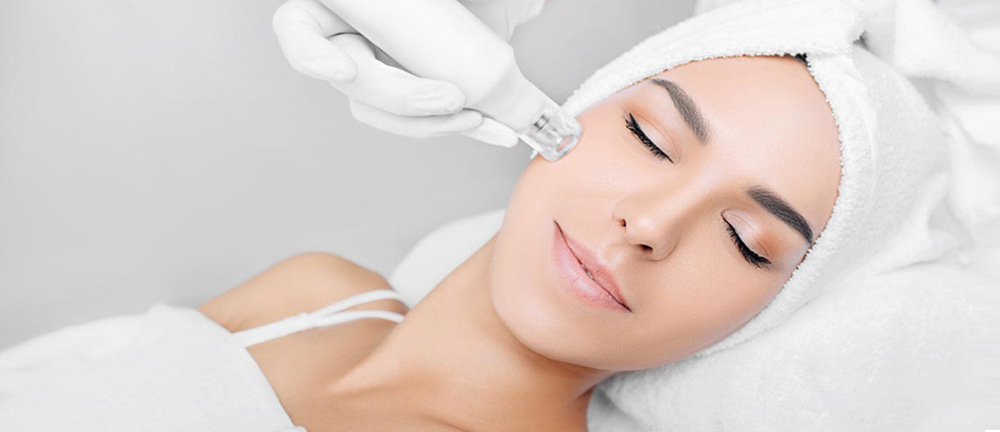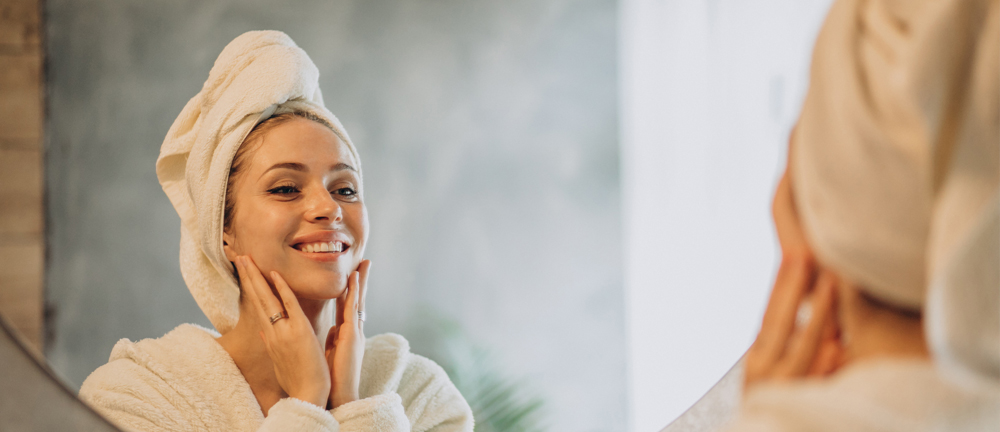Dubai life brings sunshine, glitz, and a climate that’s constantly testing your skin. Behind the city’s shine is an unseen war with heat, humidity, and air conditioning. The harsh UV radiation, constant dust exposure, and extreme temperature fluctuations between indoor and outdoor environments create a breeding ground for skin problems. For aesthetic clinics in Dubai, these conditions make advanced skin maintenance treatments like HydraFacial not just desirable, but essential to counter daily environmental stress.
A study describes how extended contact with dry, recycled indoor air can deplete the natural water barrier of the skin, causing it to become dry, irritated, and sensitive. In Dubai, where locals spend most of their day coming indoors and out into the scorching desert air, this is even more extreme. Mix in constant exposure to UV radiation proven to fast track collagen degradation and induce uneven pigmentation and it is no wonder even the most stringent skincare regimens are unable to keep up.
Why a HydraFacial Becomes More Than a Luxury
A HydraFacial isn’t simply another facial treatment; it’s a clinically designed aesthetic solution that supports long-term skin health. Employing patented vortex technology, the treatment penetrates deep into the skin to clean, exfoliate, and hydrate without irritation. Healthline calls it a non surgical treatment that cleanses and nourishes simultaneously. For Dubai residents, this synergy of cleansing and hydration addresses the city’s twin challenges, UV exposure and chronic dehydration.
The outcome is not just a glow immediately, but also healthier looking skin in the long run. The skin, though, becomes more sensitive and receptive once the treatment stops. This is why post-HydraFacial care within Dubai’s environment is very important in order to guard the results and prevent irritation or pigmentation after the facial.
The Role of Hydration in Maintaining Results
After a HydraFacial, your skin’s top layer is freshly exfoliated and its hydration channels are open. In Dubai’s dry indoor air, this moisture can evaporate quickly if not replenished. Hydration acts as the foundation of all post-facial recovery protocols recommended by dermatologists in the UAE. Experts recommend drinking at least two to three litres of water per day and using a lightweight, hydrating moisturiser rich in hyaluronic acid. Cleveland Clinic points out that keeping the skin’s water balance intact following any exfoliating treatment aids in reinforcing its barrier and increasing the absorption of nutrients from later skincare products.
This post treatment hydration must not only be from the topical products but also from lifestyle. Stay away from long hot showers or excessive face washing, which can deplete the skin of its natural oils. Use a gentle, pH balanced cleanser and steer clear of foaming products for at least 24 hours after the treatment.
The Power of Sun Protection in the Desert
In a city where sunshine is practically 365 days a year, sun protection isn’t just recommended, it’s essential. Following a HydraFacial, the skin is especially sensitive to the sun because of the exfoliation process. Dermatologists advise using a broad spectrum SPF 30 or more upon completion of the treatment and repeating every few hours when in the sun. Failing to use sunscreen will immediately undo the effects of the facial, leading to redness, pigmentation, or uneven color.
Direct sun should be avoided in the first 48 to 72 hours. If you need to go outside, wear a wide brimmed hat and try to stay shaded. Even short trips in the car can lead to sun damage from car windows because UV rays pass right through glass on Dubai’s bright light.
The Importance of Gentle Skincare After the Procedure
The days following a HydraFacial should focus on healing rather than experimentation. Products containing retinol, glycolic acid, or exfoliating enzymes must be avoided for at least two days. These active ingredients, though beneficial in routine skincare, can irritate the freshly treated skin barrier. Medical News Today highlights that introducing harsh activities too early can lead to inflammation and peeling, reducing the treatment’s benefits.
Instead, use minimal ingredients and avoid layering multiple serums or creams. A soothing, fragrance free moisturiser and a hydrating serum containing antioxidants are sufficient. Skipping makeup for the first 24 hours also allows your skin to breathe and recover fully.
Avoiding Heat and Sweat in the First 48 Hours
Dubai’s warm climate makes it tempting to head outdoors or exercise soon after a facial, but this is one of the most common mistakes people make post HydraFacial. Heat, sweat, and friction can cause irritation and even temporary breakouts. Neaman Plastic Surgery advises avoiding saunas, steam rooms, hot yoga, and direct sunlight for at least 48 hours post treatment.
Excessive sweating is likely to open up pores too early and let dust or bacteria re enter, undermining the deep cleansing action. This step is especially crucial for Dubai residents who face high humidity and temperature spikes, both of which can prolong redness and congestion post-treatment. Even indoors, do not sit too near heat sources such as kitchen stoves or hairdryers during this time.
Long Term Maintenance for Lasting Results
While a single HydraFacial delivers immediate radiance, maintaining that glow requires consistent care. In Dubai’s climate, monthly sessions are often recommended to combat the buildup of oil, sweat, and pollutants that accumulate over time. InStyle and Capizzi Dermatology both note that regular HydraFacials can significantly improve texture, tone, and hydration when supported by proper at-home care.
Between sessions, consistency is paramount. Continue daily sun protection, gentle wash, and proper hydration. Add antioxidants in the form of vitamin C serums when the skin has fully healed because they counteract oxidative stress resulting from UV light exposure and air pollution. In dry months when air conditioning blows continuously transition into richer creams to avoid evaporation loss and revert to lighter products in damp or dusty climates.
Why Dubai’s Climate Demands Special Skin Aftercare
Unlike cooler or more temperate climates, Dubai requires a customised post facial treatment. The recurring transition between intense heat outside and cold dry air inside repeatedly shocks the skin. Such oscillation can lead to trans epidermal water loss, a situation where the skin loses more water than it can replace. Without correct aftercare, the effects of a HydraFacial are short lived, and the skin can go back to dullness or irritation.
Furthermore, dust and pollution particles tend to settle on newly treated skin. Twice daily gentle washing with lukewarm water and a non foaming cleanser prevents congestion while keeping the skin comfortable.
In Conclusion
Your skin in Dubai has to work harder than most, being subjected to constant environmental extremes that put its equilibrium to the test. A HydraFacial provides a reset cleanse deep down, hydrates intensely, and revives radiance but how well it lasts is down to how well you treat your skin afterwards.
At The Nova Clinic, HydraFacial aftercare protocols are personalized to each client’s skin type, lifestyle, and environment ensuring lasting hydration, radiance, and resilience in Dubai’s challenging weather. For those seeking professional guidance on maintaining radiant, healthy skin in Dubai’s demanding climate, The Nova Clinic provides expert led HydraFacial treatments and personalised aftercare plans designed for the city’s unique environment.









